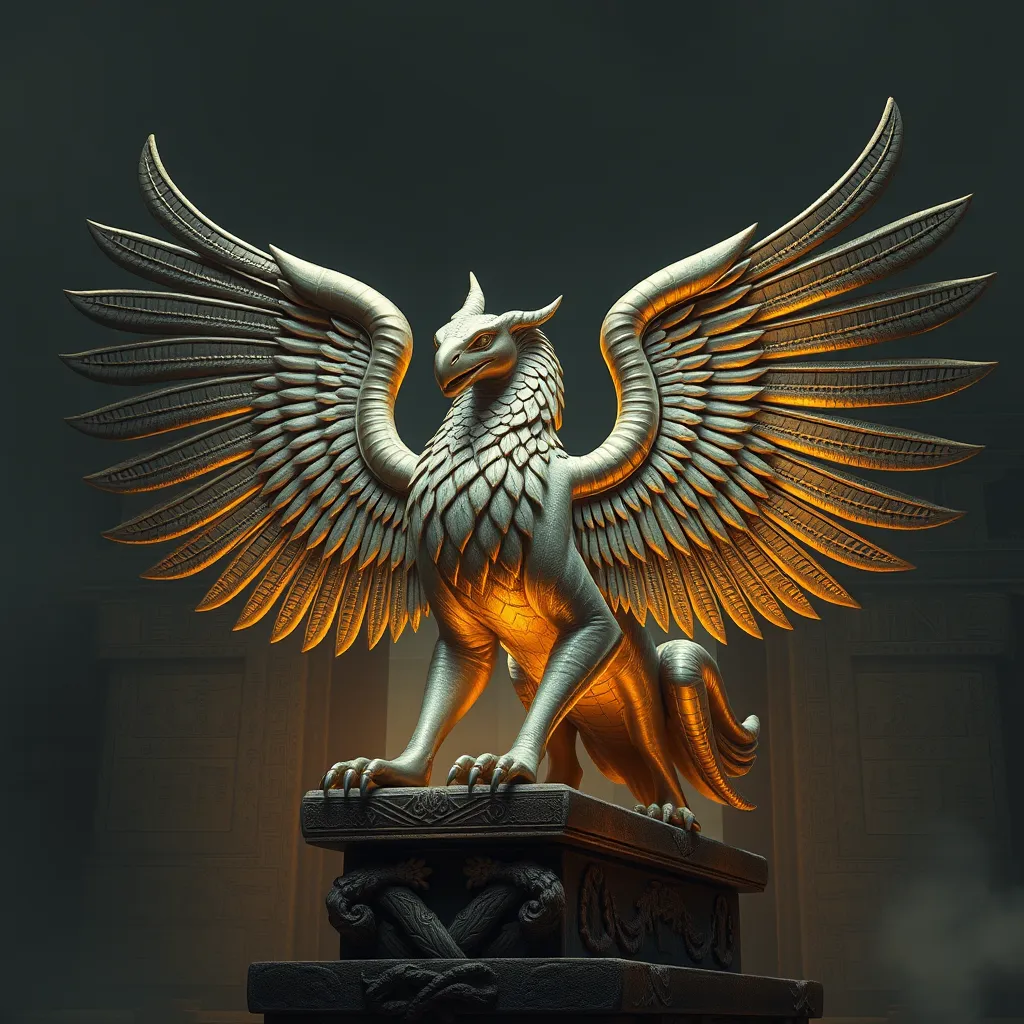The Griffin’s Role in Egyptian Mythological Art and Architecture
I. Introduction
The Griffin, a mythical creature with the body of a lion and the head and wings of an eagle, has long captivated the imagination of cultures around the world. This majestic being serves as a powerful symbol of strength, protection, and divine authority. In the context of Egyptian mythology, the Griffin holds significant importance, intertwining with the rich tapestry of art and architecture that characterized ancient Egypt.
Egyptian mythological art and architecture not only reflected the beliefs and practices of the civilization but also served to communicate their religious and cultural values. The purpose of this article is to explore the multifaceted role of the Griffin within this context, examining its origins, symbolism, artistic representations, architectural significance, and lasting impact on later cultures.
II. Origins of the Griffin in Ancient Cultures
The Griffin’s symbolism can be traced back to various ancient cultures, where it was often associated with the divine and served as a guardian figure. Its dual nature, combining the fierce strength of a lion with the keen intellect and authority of an eagle, made it an ideal representation of power and protection.
In Egyptian mythology, the Griffin was closely linked to the sun god Ra and other deities, symbolizing the protection of the pharaohs and the afterlife. Comparatively, other ancient cultures also revered the Griffin, seen in the art of the Persians and Greeks, where it was often depicted as a guardian of treasures or sacred sites.
III. The Griffin as a Symbol of Protection
The Griffin’s primary role in Egyptian culture was as a protector, safeguarding sacred spaces such as temples and tombs. This protective aspect is evident in various artistic and architectural motifs that feature the Griffin.
- Role of the Griffin in safeguarding temples and tombs: The presence of Griffins was believed to ward off evil spirits and ensure the safety of the deceased in their journey to the afterlife.
- Examples of protective griffin motifs in Egyptian art: Many tomb paintings and reliefs featured Griffins, often shown in a stance that suggested vigilance and readiness to defend.
- The Griffin’s dual nature: By blending human and animal traits, the Griffin embodied the qualities of both the divine and the earthly, reinforcing its role as a guardian.
IV. Griffin Representations in Egyptian Art
Egyptian artists employed various styles and techniques to depict Griffins, emphasizing their regal and protective qualities. The artistic representations varied from detailed reliefs found in temples to intricate jewelry pieces.
Significant artifacts featuring Griffins include:
- Sculptures: Numerous sculptures from the New Kingdom showcase Griffins, often carved from stone or wood, reflecting their majestic appearance.
- Jewelry: Gold and gemstone jewelry adorned with Griffin motifs served not only as decorative items but also as talismans believed to provide protection.
In a religious context, Griffin imagery was interpreted as a manifestation of divine protection, often associated with the afterlife and the safeguarding of sacred knowledge.
V. Architectural Significance of the Griffin
In addition to their artistic representation, Griffins played a crucial role in Egyptian architecture. Their motifs were incorporated into various structures, enhancing both their aesthetic appeal and symbolic significance.
- Use of Griffin motifs in temple architecture: Many temples featured columns and doorways adorned with Griffin carvings, symbolizing the divine protection offered to worshippers.
- Role of Griffins in funerary architecture and burial practices: Griffins were often depicted at the entrances of tombs, serving as guardians for the deceased.
- Analysis of architectural sites where Griffins are prominent: Locations such as the Temple of Karnak and various royal tombs in the Valley of the Kings reveal the extensive use of Griffin motifs in their design.
VI. The Griffin in Egyptian Mythology and Literature
The Griffin occupies a notable position within Egyptian mythological narratives, often appearing in tales that emphasize its protective qualities. It was depicted as a companion to various gods and was believed to play a role in the judgment of souls.
References to Griffins can be found in ancient texts and inscriptions, highlighting their significance in rituals and beliefs surrounding death and the afterlife. Moreover, the Griffin has influenced the representations of other mythological creatures across cultures, merging attributes from various legends into new forms.
VII. The Griffin’s Legacy in Later Cultures
The impact of Egyptian Griffins extended beyond their own civilization, influencing Greco-Roman art where they were often depicted as symbols of power and protection. Their representation evolved, but the core symbolism remained intact.
- Influence of Egyptian Griffins on Greco-Roman art: In art and literature, Griffins were adopted by the Greeks and Romans as emblematic creatures, often found in decorative motifs and sculptures.
- The Griffin’s role in medieval and modern interpretations: During the medieval period, Griffins were incorporated into heraldry, symbolizing courage and valor. In modern times, they continue to appear in literature, films, and popular culture.
- Contemporary representations and cultural significance: Today, the Griffin is often used in logos, art, and literature, symbolizing strength, protection, and the fusion of different worlds.
VIII. Conclusion
The Griffin’s multifaceted role in Egyptian art and architecture reflects its significance as a symbol of power, protection, and divine authority. Its presence in temples and tombs, along with its artistic representations, illustrates the deep connection between mythology and the tangible world of ancient Egypt.
This enduring legacy highlights the Griffin’s importance not only in Egyptian culture but also its influence on subsequent civilizations. The intersection of art, architecture, and mythology in ancient Egypt continues to fascinate, demonstrating how a single creature can encapsulate the beliefs and values of an entire civilization.



